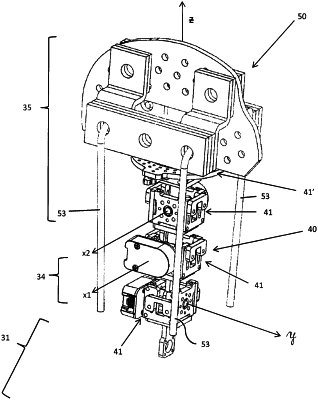| CPC G09B 23/32 (2013.01) [G09B 23/303 (2013.01)] | 21 Claims |

|
1. A neck mechanism for a mannequin comprising:
at least three joint units serially connected to provide joints for at least three rotational degrees of freedom (DOF), with a rotational axis of a first DOF configured to be aligned with a lateral axis of the mannequin, a rotational axis of a second DOF configured to be aligned with an anterior-posterior axis of the mannequin, and a rotational axis of a third DOF configured to be aligned with a cranial-caudal axis of the mannequin,
motion sensors to measure movements at each of the at least three joint units,
wherein at least one of the joint units includes a shaft located between journal walls, the shaft defining the rotational axis, and
wherein a bottom one of the at least three joint units is adapted to be connected to a torso of the mannequin, and a top one of the at least three joint units is adapted to be connected to a skull.
|